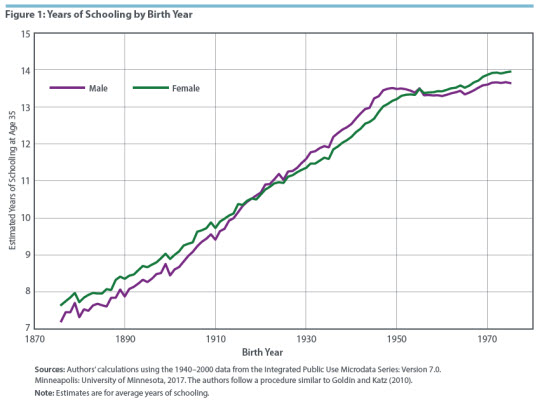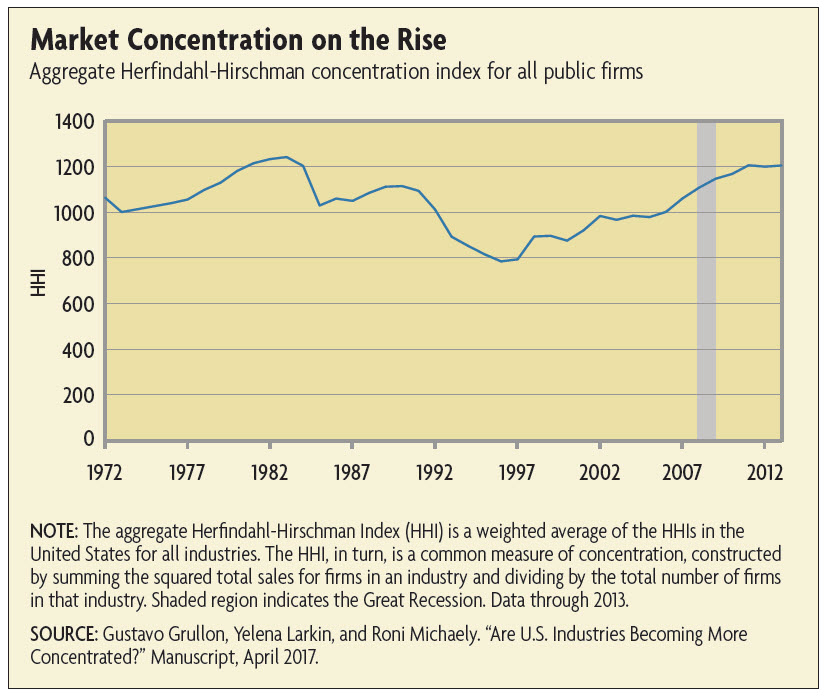There's an old rueful line from firms that advertise: "We know that half of all we spend on advertising is wasted, but we don't know which half." It's not clear who originally coined the phrase. But we do know that the effects of advertising have changed dramatically in a digital age. Half of all advertising spending may still be wasted, but now it's for a very different reason.
I was raised with the folklore that John Wanamaker, founder of the eponymous department stores, was the originator of the phrase at hand. But the attribution gets pretty shaky, pretty fast. David Ogilvy, the head of the famous Ogilvy & Mather advertising agency, wrote in his 1963 book Confessions of an Advertising Man (pp. 86-87): "As Lord Leverhulme (and John Wanamaker after him) complained, `Half the money I spend on advertising is wasted, and the trouble is I don't know which half."
So how about William Lever, Lord Leverhulme, who built a fortune in the soap business (with Sunlight Soap, and eventually Unilever)? Career advertising executive
Jeremy Bullmore has looked into it, and wrote in the 2013 annual report of the British advertising and public relations firm WPP:
"There are at least a dozen minor variations of this sentiment that are confidently quoted and variously attributed but they all have in common the words ‘advertising’, ‘half’ and ‘waste’. Google the line and you’ll get about nine million results. ... As it happens, there’s little hard evidence that either William Lever or John Wanamaker (or indeed Ford or Penney) ever made such a remark. Certainly, neither the Wanamaker nor the Unilever archives contains any such reference. Yet for a hundred years or so, with no accredited source and no data to support it, this piece of folklore has survived and prospered."
Bullmore makes some compelling points. One is that even 100 years ago, it was widely believed tha advertising could be usefully shaped and targeted. He writes:
"Retail advertising in the days of John Wanamaker was mostly placed in local newspapers and was mainly used to shift specific stock. An ad for neckties read, ‘They’re not as good as they look, but they’re good enough. 25 cents.’ The neckties sold out by closing time and so weren’t advertised again. Waste, zero. Experiment was commonplace. Every element of an advertisement – size, headline, position in paper – was tested for efficacy and discarded if found wanting. Waste, if not eliminated, was ruthlessly hounded.
"Claude Hopkins published Scientific Advertising in 1923. In it, he writes, “Advertising, once a gamble, has… become… one of the safest of business ventures. Certainly no other enterprise with comparable possibilities need involve so little risk.” Even allowing for adman’s exuberance, it strongly suggests that, within Wanamaker’s lifetime, there were very few advertisers who would have agreed that half their advertising money was wasted."
Further, Bullmore points out that people are more comfortable buying certain products because "everyone knows" about them, and "everyone knows" because even those who don't purchase the product have seen the ads.
"A common attribute of all successful, mass-market, repeat-purchase consumer brands is a kind of fame. And the kind of fame they enjoy is not targeted, circumscribed fame but a curiously indiscriminate fame that transcends its particular market sector. Coca-Cola is not just a famous soft drink. Dove is not just a famous soap. Ford is not just a famous car manufacturer. In all these cases, their fame depends on their being known to just about everyone in the world: even if they neither buy nor use. Show-biz publicists have understood this for ever. When The Beatles invaded America in 1964, their manager Brian Epstein didn’t arrange a series of targeted interviews in fan magazines; he brokered three appearances on the Ed Sullivan Show with an audience for each estimated at 70 million. Far fewer than half of that 70 million will have subsequently bought a Beatles record or a Beatles ticket; but it seems unlikely that Epstein thought this extended exposure in any way wasted."
And of course, if large amounts of advertising are literally wasted, it seems as we should be able to observe a substantial number of companies who cut their advertising budget in half and suffered no measurable decline in sales. (In fact, if half of advertising is always wasted, shouldn't the firm then keep cutting the advertising budget by half, and half again, and half again, and so down to zero? Seems as if there must be a flaw in this logic!)
Of course, one of the major changes in advertising during the last decade or two is that
print advertising has plummeted, while digital advertising has soared. More generally, digital technology has made it much more straightforward to create systematic variations in the quantity and qualities of advertising-- and to track the results. Bullmore writes: "And given modern measurements and the growth of digital channels, it’s easier than ever for advertising to be held accountable; to be seen to be more investment than cost."
But Bullmore is probably too optimistic here about how easy it is to hold advertising accountable, for a couple of reasons.
One problem is that the idea of targeting specific audiences for digital advertising is a lot more complicated in practice than it may seem at first. Judy Unger Franks of Medill School of Journalism, Media, Integrated Market Communications at Northwestern University explained the issues
in a short essay late last summer: She wrote:
"Programmatic Advertising enables marketers to make advertising investments to select individuals in a media audience as opposed to having to buy the entire audience. Advertisers use a wealth of Big Data to learn about each audience member to then determine whether that audience member should be served with an advertisement and at what price. This all happens in near real-time and advertisers can therefore make near real-time adjustments to their approach to optimize the return-on-investment of its advertising expenditures.
"In theory, Programmatic Advertising should solve the issue of waste. However, in our attempt to eliminate waste from the advertising value chain, we may have made things worse. We have unleashed a dark side to Programmatic Advertising that comes at a significant cost. Now, we know exactly which half of the money spent on advertising is wasted: it’s the half that marketers must now spend on third parties who have inserted themselves into the Programmatic Advertising ecosystem just to keep our investments clean. ...
"How bad is it? How much money are advertisers spending on this murky supply chain? The IAB (Interactive Advertising Bureau) answered this for us when they released their White Paper, “The Programmatic Supply Chain: Deconstructing the Anatomy of a Programmatic CPM” in March of 2016. The IAB identified ten different value layers in the Programmatic ecosystem. I believe they are being overly generous by calling each a “value” layer. When you need an ad blocking service to avoid buying questionable content and a separate verification service to make sure that the ad was viewable by a human, how is this valuable? When you add up all the costs associated with the ten different layers, they account for 55% of the cpm (cost-per-thousand) that an advertiser pays for a programmatic ad. This means that for every dollar an advertiser spends in Programmatic Advertising over half (55%) of that dollar never reaches the publisher. It falls into the hands of all the third parties that are required to feed the beast that is the overly complex Programmatic Advertising ecosystem. We now know which half of an advertising investment is wasted. It’s wasted on infrastructure to prop up all those opportunities to buy individual audiences across the entire Programmatic Advertising supply chain."
In other words, by the time an advertiser has spent the money to do the targeting, and to make sure that the mechanisms to do the targeting work, and to follow up on the targeting, the costs can be so high that the reason for targeting in the first place is in danger of being lost.
The other interesting problem is that academic studies that have tried to measure the returns to targeted online advertising have run into severe problems. For a discussion, see "The Unfavorable Economics of Measuring the Returns to Advertising," by Randall A. Lewis and Justin M. Rao
(
Quarterly Journal of Economics, 130:4, November 2015, pp. 1941–1973, available
here). They describe the old "half of what I spend in advertising is wasted" slogan in these terms (citations omitted):
"In the United States, firms annually spend about $500 per
person on advertising. To break
even, this expenditure implies that the universe of advertisers
needs to casually affect $1,500–2,200 in annual sales per
person, or about $3,500–5,500 per household. A question that
has remained open over the years is whether advertising affects
purchasing behavior to the degree implied by prevailing advertising
prices and firms’ gross margins ..."
The authors look at 25 studies of digital advertising. They find that the variations in what people buy and how much they spend are very large. Thus, it's theoretically possible that if adverting causes even a small number of people to "tip" from spending only a little on a product to being big spender on a product, the advertising can pay off for the advertiser. But in statistical sense, given that people vary so much in their spending on products and change so much anyway, it's really hard to disentangle the effects of advertising from the changes in buying patterns that happen anyway. As the authors write: "[W]e are making the admittedly strong claim that most
advertisers do not, and indeed some cannot, know the effectiveness
of their advertising spend ..."
Thus, the economics of spending on advertising remain largely unresolved, even in the digital age. Those interested in more on the economics of advertising might want to check my post on
"The Case For and Against Advertising" (November 15, 2012).






